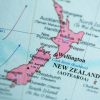- The NZD/USD pair rose sharply today after the RBNZ interest rate decision because odds of negative interest rates in New Zealand have reduced
The NZDUSD price jumped after the latest interest rate decision by the New Zealand Central Bank (RBNZ). The pair climbed to a high of 0.6900, which is the highest it has been since May 2019.
In its November interest rate meeting, the RBNZ decided to leave interest rates at 0.25%, in line with its previous guidance. That was also in line with what most analysts were expecting.
At the same time, the bank decided to leave its quantitative easing, also known as the Long-Term Asset Purchases, intact at n$100 billion. These purchases will continue until at least 2022. Analysts were expecting the bank to increase the target and possibly the duration of these purchases.
Most importantly, the RBNZ started a new program set to increase access to cheap loans by New Zealand businesses. The new program, which will start in December, will provide banks with cash to extend to businesses at lower rates.
As such, investors now believe that the bank will not switch to negative interest rates as Adrian Orr had hinted before. This explains why the NZDUSD and bond yields rallied. Indeed, economists at leading banks like ASB and Bank of New Zealand have now removed the possibility of sub-zero rates. In a statement, Orr said:
“We want to leave all options open and we’ll be revisiting that decision at our next monetary policy committee, which is in February.”
In its forecast, the RBNZ said that it expects the economy to have a double-dip recession this quarter. It expects a contraction of 0.3% and another decline of 0.2% in the first quarter because important sectors like tourism are still struggling.
NZDUSD technical outlook
Looking at the weekly chart, we see that the NZDUSD has been in a strong uptrend. The pair reached a high of 0.6900, which is a 26% increase from the YTD low of 0.5457. The price has also moved above the 61.8% Fibonacci retracement, which connects the highest point in 2017 with the YTD low. It is also above the 50-day and 100-day moving averages.
Therefore, I suspect that the bullish trend will continue as bulls aim for the 78.6% retracement at 0.7100. On the flip side, a drop below the 50% retracement at 0.6500 will invalidate this trend.






